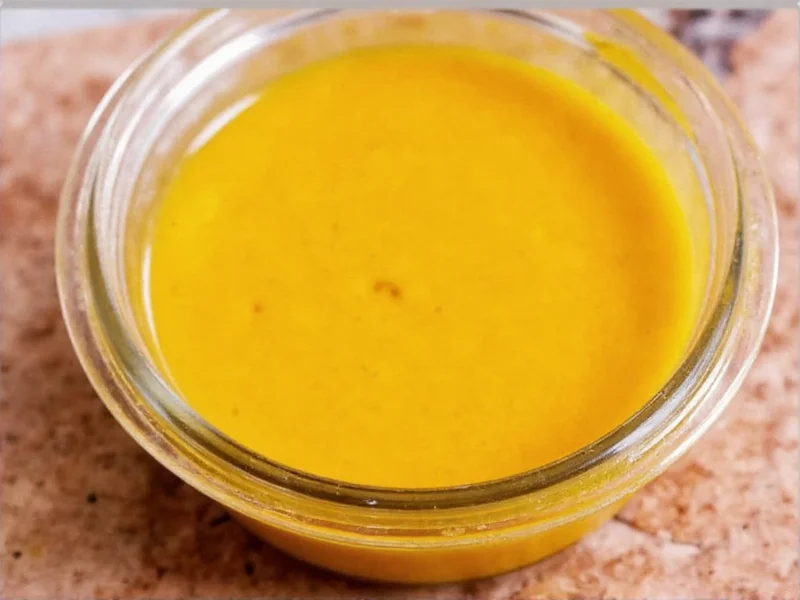When exploring yellow pepper sauce uses in cooking, you'll discover this vibrant condiment offers more than just heat. Unlike its red counterparts, yellow pepper sauce typically features milder heat levels while delivering complex fruity notes that enhance rather than overwhelm dishes. The distinctive yellow hue comes from specific pepper varieties like yellow habaneros, Scotch bonnets, or bell peppers, each contributing unique flavor profiles to the final product.
What Makes Yellow Pepper Sauce Different
The primary distinction of yellow pepper sauce lies in its base ingredient. While many hot sauces use red peppers, yellow varieties provide a different chemical composition that affects both flavor and heat. Yellow peppers contain capsaicinoids that deliver a brighter, fruitier taste with less intense burn compared to mature red peppers. This makes yellow pepper sauce perfect for beginners exploring spicy foods or for dishes where you want pepper flavor without overwhelming heat.
Key Ingredients and Variations
Authentic yellow pepper sauce recipes typically include:
- Yellow peppers (habanero, Scotch bonnet, or bell peppers)
- Vinegar (white or apple cider)
- Garlic and onions
- Salt and sugar
- Lime or lemon juice
- Spices like cumin or coriander
| Pepper Type | Heat Level (Scoville) | Flavor Profile | Best For |
|---|---|---|---|
| Yellow Habanero | 100,000-350,000 | Tropical fruit, citrus | Caribbean dishes, marinades |
| Yellow Scotch Bonnet | 100,000-350,000 | Sweet, smoky | Jamaican cuisine, stews |
| Yellow Bell Pepper | 0 | Sweet, mild | Creamy sauces, mild dressings |
| Yellow Wax Pepper | 5,000-10,000 | Grassy, mild heat | Pickling, sandwiches |
Culinary Applications of Yellow Pepper Sauce
Understanding how to use yellow pepper sauce effectively can transform your cooking. Unlike hotter sauces that often serve as finishing touches, yellow pepper sauce's balanced profile allows for more versatile applications:
Marinades and Rubs
The acidity in yellow pepper sauce helps tenderize proteins while the pepper flavors penetrate deeply. Try combining it with olive oil, garlic, and herbs for chicken or fish marinades that cook evenly without burning.
Sauces and Dressings
When creating yellow pepper sauce creamy variations, blend it with mayonnaise, yogurt, or sour cream for dipping sauces that maintain the pepper flavor while reducing heat intensity. This technique works particularly well for coleslaw dressings or seafood dipping sauces.
Cooking Ingredient
Add yellow pepper sauce during cooking rather than just as a condiment. Its flavor compounds are more heat-stable than many red pepper sauces, allowing it to enhance dishes like soups, stews, and braises without losing character.
Homemade Yellow Pepper Sauce Recipe
Creating your own homemade yellow pepper sauce recipe ensures freshness and lets you control ingredients. Here's a basic preparation method:
- Combine 10-12 yellow peppers (washed and roughly chopped)
- Add 1 cup vinegar, 3 garlic cloves, 1 small onion, and 1 teaspoon salt
- Simmer for 10-15 minutes until peppers soften
- Cool slightly, then blend until smooth
- Strain through fine mesh sieve for smoother texture (optional)
- Bottle in sterilized containers and refrigerate
This basic easy yellow pepper sauce preparation yields approximately 2 cups. Adjust heat by removing seeds and membranes from hotter peppers, or add sweetness with 1-2 tablespoons of honey for balance.
Storage and Shelf Life
Properly stored yellow pepper sauce maintains quality for different durations depending on preparation:
- Refrigerated (vinegar-based): 6-8 months
- Refrigerated (fresh pepper only): 2-3 weeks
- Processed in water bath canner: 12-18 months
- Freezer: Up to 1 year in ice cube trays for portion control
Always use clean utensils when handling to prevent contamination. Discard if mold appears or if the sauce develops off odors.
Substitutions and Pairing Suggestions
When yellow pepper sauce isn't available, consider these alternatives:
- Mix red pepper sauce with a touch of turmeric for color (though flavor differs)
- Combine mild green jalapeño sauce with yellow bell pepper puree
- Use mango habanero sauce for similar fruitiness with different color
Yellow pepper sauce pairs exceptionally well with:
- Seafood (especially grilled fish and shrimp)
- White meats (chicken, turkey)
- Eggs and breakfast dishes
- Creamy cheeses like feta or goat cheese
- Fruit-based salsas and salads
Nutritional Profile
Yellow peppers provide significant nutritional benefits that carry into the sauce. A typical tablespoon (15ml) serving contains:
- 5-10 calories
- Rich in vitamin C (30-50% of daily value)
- Good source of vitamin A
- Contains capsaicin with potential metabolic benefits
- Negligible sugar and fat
The health benefits of yellow pepper sauce nutritional content make it a smart choice for adding flavor without significant calories. Capsaicin, the compound responsible for heat, may boost metabolism and provide anti-inflammatory effects.
Regional Variations Worth Exploring
Different culinary traditions have developed unique takes on yellow pepper sauce:
Caribbean Style
Jamaican and Haitian versions often feature Scotch bonnet peppers with allspice and thyme, creating a complex flavor profile that's essential for jerk seasoning and seafood dishes.
Mexican Adaptations
While less common than red or green sauces, some regions create yellow versions using chilcostle or guajillo peppers blended with tomatillo for a unique flavor combination.
Asian Fusion
Modern interpretations blend yellow peppers with Asian ingredients like ginger, rice vinegar, and sesame oil for dipping sauces that complement spring rolls and dumplings.











 浙公网安备
33010002000092号
浙公网安备
33010002000092号 浙B2-20120091-4
浙B2-20120091-4